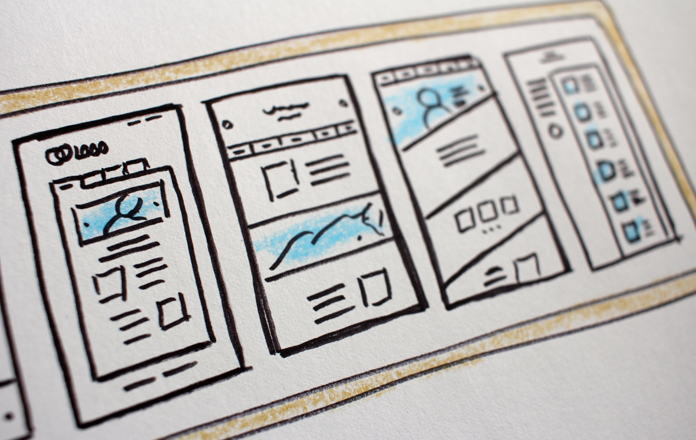A storyboard provides knowledge about what your video should look like without ever picking up your camera or looking at your screen. A storyboard can also provide valuable information to you or someone working on your script.
What is a storyboard?
A storyboard is a visual depiction of how the shot is shot by chance, and the video will unfold. Storyboards are a powerful way of presenting details visually; The linear orientation of cells is ideal for telling stories, describing a process, and the passage of time.
Using a storyboard can be challenging or simple. Although some people prefer to use story boarding software to create their pictures, they are usually hand-drawn. A storyboard is similar to a script, but the two are not the same – storyboards are visual, while text-based scripts are.

Why Do You Need a Storyboard?
Story boarding adds an extra step to the process of creating your video, but the time and effort are worth it. In many important ways, creating a storyboard pays off. So, if you’re still wondering, “What is a storyboard? How can I take advantage of this when making my videos?” Here are some of the most important advantages:
Read also: How to Make a Storyboard for a Better Videos
1. It helps you to organize your vision: Creating a storyboard helps you condense all the thoughts revolving around your head into a coherent, fleshy-out vision.
2. This helps you plan your videos more effectively: For the video, you have to coordinate a lot of small but essential details. Because of this, you are making a good video on the fly is difficult (if not downright impossible). The more you can plan your video, the better the product will end up.
3. It helps you to spread your ideas to other people: You can visualize exactly how you want to see your video, but using only words can make it challenging to convey your ideas to other people. A storyboard bridge, which makes a difference for you, helps your colleagues or customers with the kind of video you keep in mind.
4. It simplifies everything that comes later: Investing some time and effort in a storyboard can save you more time, energy, and frustration then. If you have found a good storyboard before you start shooting, you will not be able to bring your video to life more efficiently, and you will not have the possibility to waste time on expensive mistakes or ideas that do not pan. Having a storyboard helps make your video more simple.
How to Create a Storyboard
A storyboard is essentially a series of images that depict every frame of your film. You can do this on paper, in a word processing system, or by using specialized software, how you bring the storyboard together, and how much information you can add.
1. Defines what you want to do with your video
Do some pre-planning before you break your drawing pencil. First, start by thinking about what you want to achieve by making this video. For example, do you want to sell a particular product, enhance your brand image, or create a training resource for employees? How do you want people to feel after watching your video? Setting clear, specific goals for your video will help you make more informed creative choices down the line.
2. Brainstorm
Submit the best views for your video. Write to all of them, even those that seem infrequent or terrible. Try a combination of different ideas to see what happens. After all, what is a storyboard if you don’t have all your senses to put it together?
If others are involved in making this video, brainstorm them with you so you can bounce ideas off each other. Once your creative juices flow, you are surprised.
3.Create a timeline
Once you get an excellent idea of what is going to happen in your video, start ending a timeline. Identify the beginning, middle, and end of your story as well as any significant changes. Make sure the idea flows well, makes sense, and has an emotional hook. A small business video does not require a complex plot, but it requires some tension and a satisfying solution. If you find gaps in your timeline, refer to your brainstorm notes for ideas on how to fill them.
4. Start drawing
This is the fun part! Choose the type of storyboard that will work best for your project and start drawing. If your video is live-action, we recommend sketching your storyboard on paper; And if it is animated, we recommend creating a digital storyboard with software such as Adobe Illustrator.
5. Add Text Descriptions
Once the visual part of the storyboard is completed, add text to each scene so that it can then follow, which will review the storyboard. It can be a voice over, a conversation between the characters, or even a brief description of what goes on in each scene.
6. Animator/Videographer Notes
Adding notes that will direct your animators or videographers is also essential. For example, add it to your storyboard to inform the team if you want to zoom, pan, tilt, or see a particular change.
7. Revise your storyboard
Revision is one of the essential parts of the story boarding process. Instead of seeing change as a change, please take it as an opportunity to experiment with different methods and improve your storyboard as much as possible. During the revision process, it is good to have other people on board so that you can react to each other before starting production and detect any errors.



